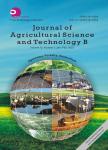Brazilian Buffalo Genetic Variability by Cross-Specific Microsatellite Set
Brazilian Buffalo Genetic Variability by Cross-Specific Microsatellite Set作者机构:Veterinary Genetics Institute (IGEVET) CCT La Plata-Veterinary Science Faculty National University of La Plata-CONICET LaPlata Buenos Aires Province B19OOA VW CC 296 Argentina Laboratory of Genetics Veterinary Science Faculty Federal University of Minas Gerais Belo Horizonte Minas Gerais State31270-010 Brasil
出 版 物:《Journal of Agricultural Science and Technology(B)》 (农业科学与技术(B))
年 卷 期:2011年第1卷第7期
页 面:1008-1012页
学科分类:0905[农学-畜牧学] 09[农学] 0901[农学-作物学]
主 题:Buffalo microsatellite variability DNA markers traceability.
摘 要:Buffaloes (Bubalus bubalis) are widely distributed and were introduced to Brazil in 1895. Most of the molecular genetic characterization of buffaloes has been done with cross-specific (cattle) markers, but few of them include Brazilian populations. Nineteen commonly used cattle microsatellites were tested to develop a multiplexed set of microsatellites and characterize Brazilian buffalo. Three PCR mixes were finally developed with the 11 markers that succeed in amplify and were polymorphic (58%). The average number of alleles was 5.42, with an average observed and expected heterocigozity of 0.441 and 0.695, respectively. As it was expected, Brazilian buffalo variability was lower than the previously reported from the domestication centres (China and India), but higher than the seriously selected European populations. The exclusion power calculated for the eleven markers in Brazilian buffalo was 0.9999999996, this allows its use in DNA based traceability.



